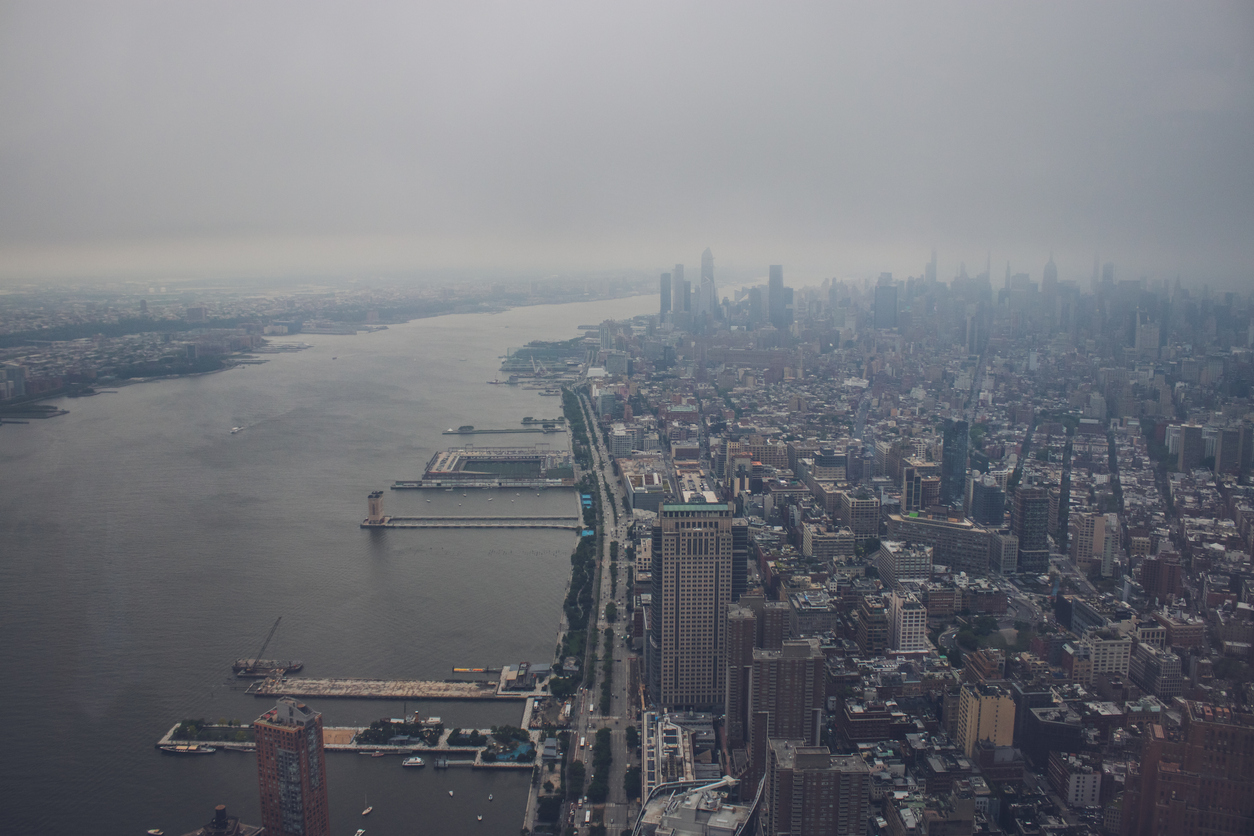Ground-level ozone (O3) negatively impacts human health across life stages, natural ecosystems, and climate. Exposure to O3 in early childhood affects the growth and function of developing lungs. O3 exposures have also been consistently shown to increase asthma medication use, mortality, emergency room visits, and hospitalizations by exacerbating asthma and chronic obstructive pulmonary disease (COPD).
In a study for the journal Atmosphere, doctoral candidate and recipient of the 2021 Dean’s Scholarship award Subraham Singh and Professor Ilias Kavouras examined spatiotemporal patterns of ground level O3 concentrations in the New York City metropolitan region between 2007 and 2017, together with local emissions of O3 precursors and the frequency of wildfires.
The analysis showed increasing O3 concentrations in sites within urban areas while concentrations in the areas surrounding the city have been declining.
“Unfortunately, ozone formation depends on the ratio of nitrogen oxides and volatile organic compounds (VOCs) in a non-linear fashion,” Kavouras explains. “Without considering VOCs composition and atmospheric conditions, reductions may lead to more O3. This is the case here.”
Because of strategies and technologies aiming to reduce nitrogen oxides from cars, the relative abundance of nitrogen oxides (NOx) and volatile organic compounds changed in a way that ozone production is now favored within urban areas, where ozone used to be low, and restricted in areas where ozone used to be high. In simpler terms, the mixture of air pollution within urban areas today is comparable to what suburban areas experienced in the past that led to ozone pollution.
The authors also found a strong correlation of O3 levels with regional wildfires through both increased VOCs emissions and the formation of peroxyacetyl nitrates (PANs). Both pathways further enhance the ozone formation within urban areas. The frequency and magnitude of wildfires in the eastern U.S. were related to the sequence of climate-sensitive El-Nino and La Nina events, with more lightning-ignited fires during dry periods.
These findings indicate that smart and targeted strategies are needed to effectively reduce the levels of all air pollutants.
“To mitigate increasing O3 levels in densely populated areas, future emission control strategies should also consider the compounding global and regional effects of climate change,” Singh says.



